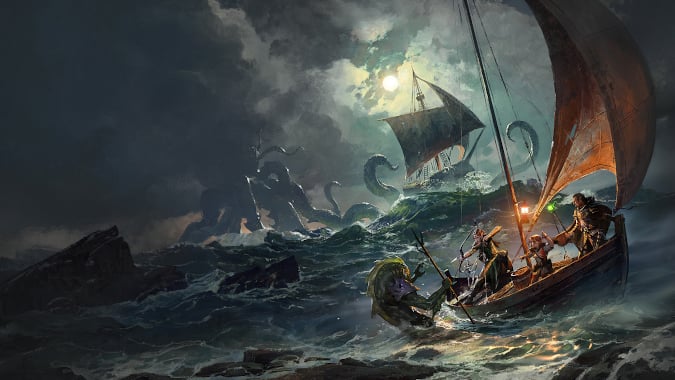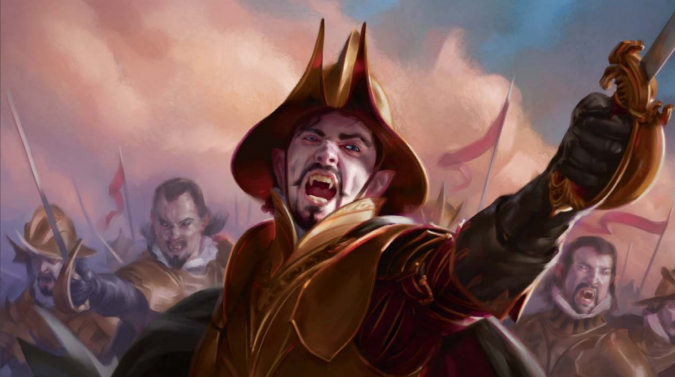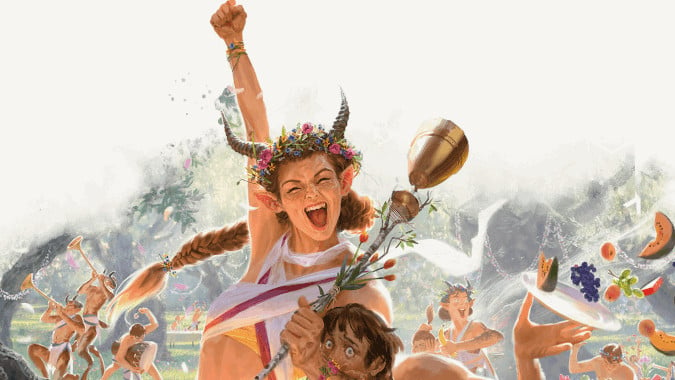Kobold Press begins playtesting Tales of the Valiant, a D&D 5E spinoff

Back in January when Wizards of the Coast backed off of Open Gaming License (OGL) updates to go with their new edition of Dungeons & Dragons, they also made a second decision that — while popular — hadn’t seen as much fanfare as of yet: they released the current D&D rules as a System Reference Document, or SRD under a Creative Commons license. While the SRD lacks some of the content that the actual systems contain, it is still a full reference to the 5th edition of D&D with a single purpose — to help publishers create their own original content, be it game supplements or full games, that is compatible with the world’s most well-known tabletop roleplaying game. The SRD (and the OGL) differs from other D&D initiatives like the DM’s Guild in that it is largely meant to allow publishers to create things that lie outside of Wizards of the Coast’s published settings and that they intend to publish on their own.
Until now, we hadn’t seen anything major published under the newly-minted SRD, but now we’re seeing our first creative efforts as longtime D&D supplement publisher Kobold Press begins playtesting their own full game derived from the SRD, called Tales of the Valiant.

What is Tales of the Valiant? What is it like?
Tales of the Valiant, formerly known as Project Black Flag, is Kobold Press’ name for what will eventually be their Core Fantasy Roleplay books — two books, one for players and one for dungeon masters — with the intention to “update, streamline, and publish a core fantasy RPG based on Dungeons & Dragon’s SRD 5.1.” Their goals are stated on the project’s website, but the best way to get a look might be to dive right into the initial round of playtest material, which deals with creating characters.
Right off the bat, we get some interesting differences, one of which is that unlike D&D — which tries to be the “jack of all trades” of fantasy roleplaying — Tales of the Valiant explicitly spells out core assumptions of whatever setting you’re playing it in, even without having a default setting:
- Fantasy worlds have magic.
- Fantasy stories are about heroes having heroic adventures.
- Fantasy worlds are full of unique locales, cultures, and creatures, as well as unique places to explore.
- Power structures and systems exist that can challenge the heroes, push them to grow their abilities, and often feature heavily in stories.
- Conflict is the heart of the fantasy genre; it’s about standing up against impossible odds and emerging victorious.
From a purely mechanical standpoint, a lot of the low-level nuts and bolts will look familiar as you skim this material. Those six core stats sure do look familiar, your method of determining your hit points maximum is the same, and even the standard array (for those of you who don’t let chaos reign when creating your characters) is close, if not exactly the same. The separation of lineage and heritage is probably the first real standout that’s different from D&D; what D&D calls race and subrace, Tales of the Valiant calls lineage and heritage. Your lineage determines things like your age, size, speed, whether you can see in the dark, and so on — physical elements — while your heritage will include things like typical alignments, proficiencies that community tends to have, and so on.
So far, much the same, right? What’s new is that Tales of the Valiant actively encourages mixing and matching these, to represent characters of one lineage growing up or training among people of a different heritage. Maybe you were a dwarf, but you grew up among humans in the big city rather than in the carved stone tunnels of your ancestors. In that case, you might pick the dwarf lineage, which informs your dwarf’s age, size, speed, and confers darkvision, dwarven resilience, and dwarven toughness to you. However, rather than picking either of the dwarven heritages, you could pick the Cosmopolitan Heritage from humans, which keeps you from getting lost or surprised in cities, lets you add your proficiency bonus to checks to understand urban artifacts from a culture you aren’t familiar with, and gifts you an extra couple of languages on top of what you can usually speak. This kind of mixing and matching can keep things fresh and new, and makes sense — if you were raised among another culture, or have parents of two different lineages, you’re not necessarily going to act the same or have the same capabilities as someone you share a lineage with. And, with a nod towards backwards compatibility, the very beginning of the packet notes that any fifth edition race and subrace combination can be substituted for Tales of the Valiant‘s lineage and heritage.
Backgrounds also should look familiar to any fan of D&D, but Tales of the Valiant‘s backgrounds look a lot like the ones in more recent D&D material in terms of power level. Specifically, instead of a minor power that most people are going to forget to use, they offer a choice of several talents — Tales of the Valiant‘s word for feats — that you can pick from, starting you off with effectively a feat at 1st level. Soldiers, for example, might choose to start off with Combat Casting as their talent, setting you up to be some kind of spellcaster with a martial background but who’s used to keeping their concentration in combat and reacting to those entering their range with cantrips. The packet offers a selection of talents to choose from, too, and a lot of these you’ll recognize as D&D feats with boosts or rebalancing, but they’re also largely backwards compatible — you could actively use any of these at your table today with the game you already know without having to really change the way you play the game, and now you’re playtesting!

All this is thanks to the Creative Commons license
Fans of D&D who’ve been around since the days of 3rd Edition may recognize some of what’s happening here, because it looks very familiar to the way that we got Pathfinder‘s 1st Edition — permissive licensing meets creative game developers. That’s exactly what’s happened here, too, because the Creative Commons license that Wizards of the Coast released the System Reference Document under means that anyone can freely use the text of that document as a foundation for their own work, requiring only that a small blurb of text attributing anything taken straight from the SRD to Wizards is included.
Kobold Press’ intentions are spelled out pretty clearly on their website, and clarify both why they’re doing this and what they’re looking to change. As Wizards of the Coast moves forward with One D&D and possibly even further editions beyond that, Kobold Press wants to keep the current edition of D&D alive, even as those core rulebooks begin to go out of print, possibly as soon as next year when One D&D is supposed to be ready. They’re also looking to build upon the incomplete nature of the SRD. There’s a lot of monsters, magic, subclasses, and more missing from the SRD, as Wizards of the Coast intends for it to be built upon, not just used as-is. Lastly, Kobold Press aims for this to be a community-focused product, in that they aim for it to “remain free from any single corporate enterprise,” and are taking community feedback even in these early stages.
The streamlining process they want to do is more straight forward; they want the system to build directly on the 5th Edition you already know, but with an eye towards:
- Making the rules easier to read and understand.
- Provide tools to lighten the GM’s burden, especially around preparation.
- Rebalance a lot of elements of the existing game, especially feats.
- Provide opportunities for players to make meaningful choices at higher levels.
- Make spellcasting cooler, and keep combat interesting.
They’re aiming to work fast, too — Tales of the Valiant‘s playtesting is live now, with a new packet of materials every month; the two core books will be on Kickstarter in May, and there will be live community playtesting as soon as this summer at GenCon. It’ll be interesting to see how all this shapes up, especially if you’re interested in something that builds on the game you already know but offers a fresh, rebalanced, and streamlined experience.
Originally published March 1, 2023; updated April 28, 2023
Please consider supporting our Patreon!
Join the Discussion
Blizzard Watch is a safe space for all readers. By leaving comments on this site you agree to follow our commenting and community guidelines.
 @awaymessageclub
@awaymessageclub




